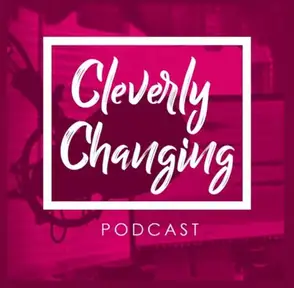The Best Way to Make Homeschool Preparations
We get back to the basics and share the best way to prepare for homeschooling in this episode.
Remember to subscribe to our podcast so you will get the latest updates.
Word of the Episode
E yi so means see you soon in Fon and is from the country of Benin Republic.
Let's Connect!
Want to be a guest on an upcoming show? Just fill out this form, and we will send you an interview link when your request is approved.
We're bringing back Cleverly Cultured Kids! We want to feature your kids on Cleverly Cultured Kids, so please complete this Interview form for kids, and we will send you an interview link once your request is approved.
You can call us directly now. Please leave us a voicemail and let us know how you enjoy the show or share your questions.
Order a Clever Homeschool Kit:
Don't forget to order one of our exclusive Clever Homeschool Kits. The kits cost $59.99 USD and include t-shirts, stickers, a homeschool planner, books, and more.
- Order your Clever Homeschool Kit here.
Grown Folks Talking About Homeschool Preparations
The three best ways to make homeschool preparations are:
- Review your state laws
- Assess your child's academic needs
- Create a plan and gather your materials
Where can you go to learn what your state's homeschool requirements are?
One organization that has laid out the requirements completely by the state is the homeschool legal defense association. Visit their website at hslda.org/legal and click on your state on the digital map. When I homeschooled, I met with my state homeschool review board twice a year, once in the fall and again in the spring. Then I shared my daughters' homeschool portfolio, showing each child receiving regular and thorough education.
Assess your child's academic needs
Evaluate how your child/children learn best. Consider using a learning styles assessment to identify their primary learning style.
Remember, people don't have just one learning style. They have several, so try to present a way to learn different materials using all three methods, which are visual, auditory, and kinesthetic or tactile learning. During the early years of homeschooling, I often daughter new information by singing (playing educational music CDs), creating models, projects, or doing experiments. I also encouraged my children to learn by playing games like a bean bag toss to practice spelling new words.
Create a plan and gather the materials
My advice is simple before you buy a complete curriculum, try it out first.
Try different curriculums to see what your child likes and dislikes. Of course, you want to give your child only work that he or she likes, but you should consider how they work best so that you can avoid meltdowns. Review what children in your state should be learning based on their ages or grades. Next, write out or type up your weekly objectives. This will give you a frame,e work to stay focused and make sure your child is thriving. Read reviews, and talk to others who may have used the curriculum.
Connect with Elle
- Website: CleverlyChanging.com
- Instagram: @CleverlyChanging
- Facebook: CleverlyChanging
- Youtube: CleverlyChanging
- Twitter: CleverlyChangin
Tweetable quote: "Remember, just because you start with a curriculum doesn't mean you have to stick with it, if it's not a good fit." - Elle Cole
Please share this episode
★ Support this podcast on Patreon ★

